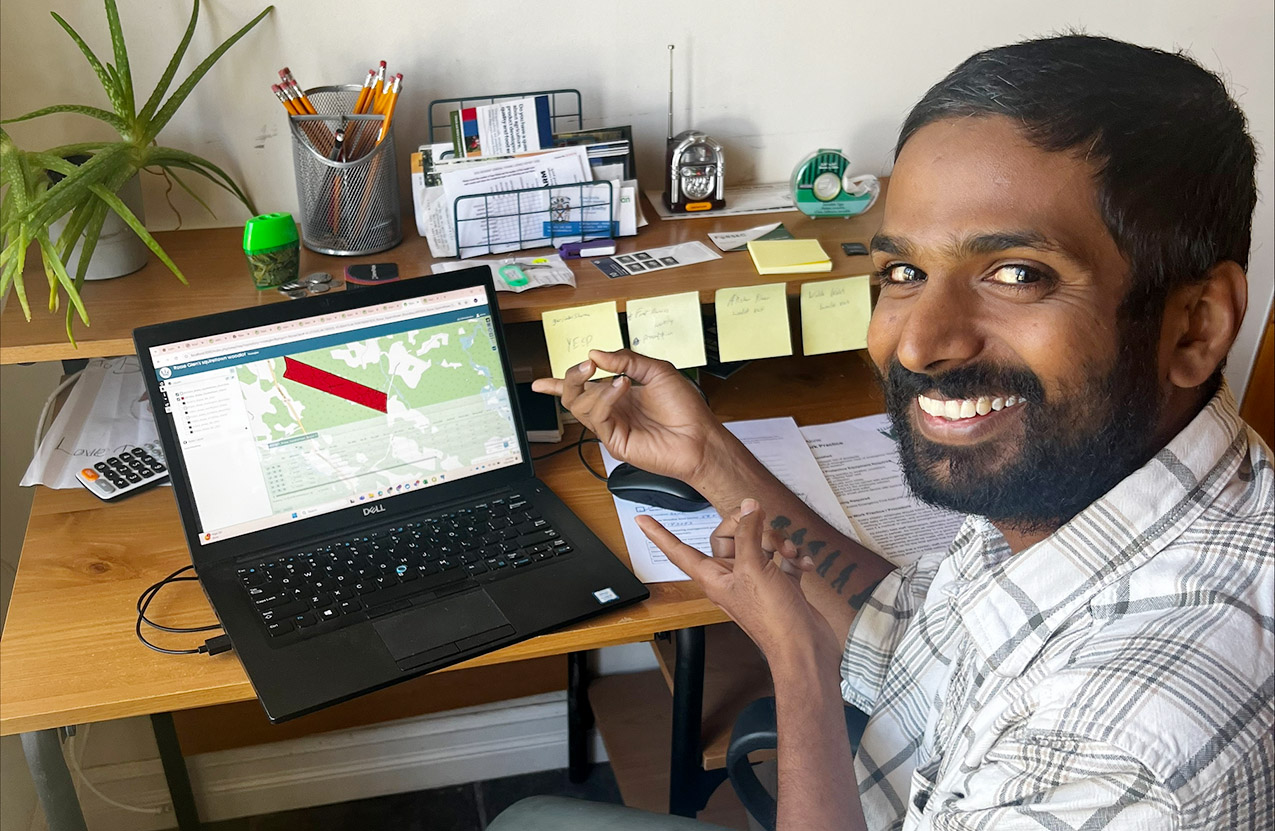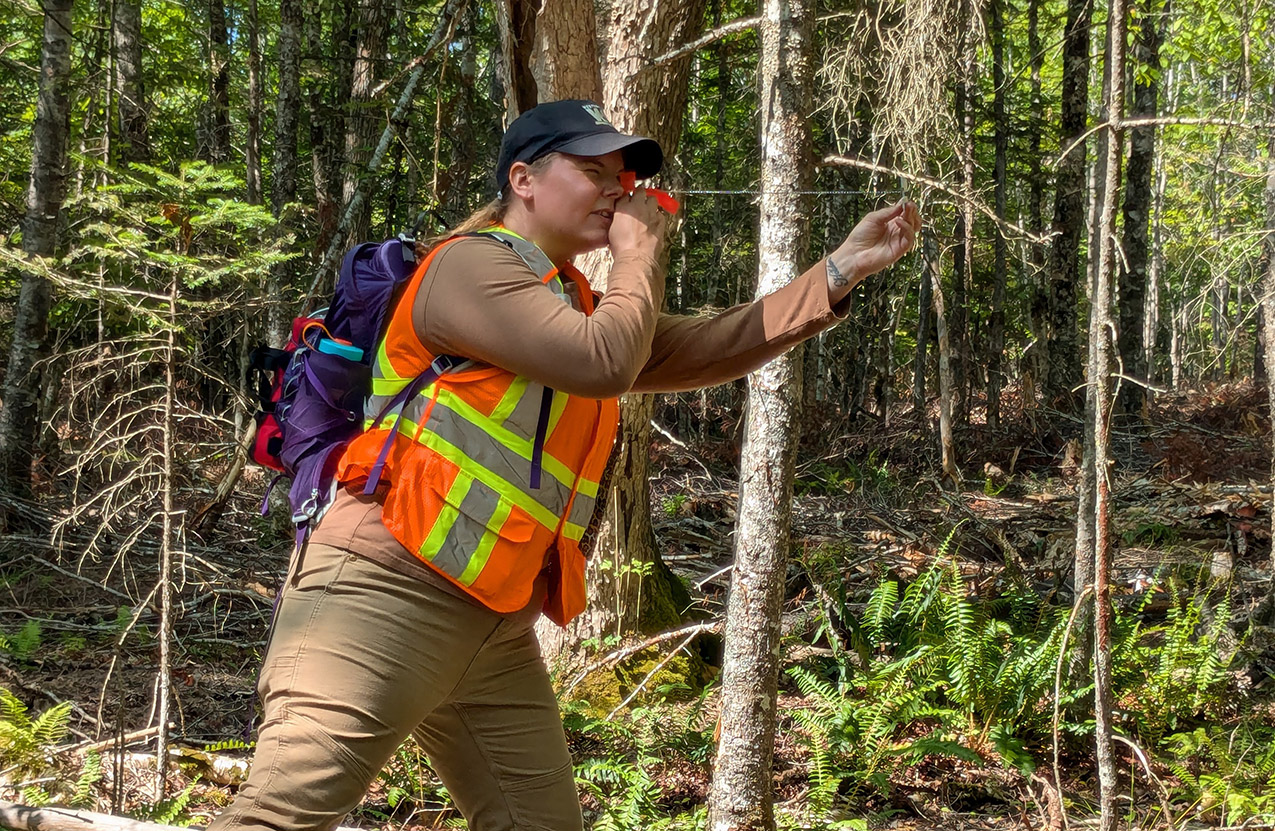How Work-Integrated Learning is advancing ecological stewardship

Date: Sep. 18, 2025
2 Students put ecological forestry into practice
Implementing ecological forestry on private land requires close collaboration with forest stewards and careful consideration of diverse priorities and goals. To prepare future forest stewards for this work, NSCC’s Natural Resources and Environmental Technology (NRET) and Forest Geomatics and Biometrics Technology programs provide the knowledge and technical skills needed to address these challenges. But it doesn’t end in the classroom.
With support from the Family Forest Network (FFN), NSCC’s Centre of Forest Innovation funded Work-Integrated Learning (WIL) placements across eight partner organizations. Our WIL placements take learning into the field, allowing students to apply their skills and build professional relationships, as they prepare for careers in ecological forestry.
Rebecca’s journey from healthcare to forestry

First-year NRET student Rebecca Getson brought a unique perspective to the program, having spent 13 years working in long-term health care while raising her children. “I've always been outdoorsy—hiking, canoeing, kayaking, you name it,” she says. “A friend of mine was taking the NRET program. He shared some stories with me and it just felt like it was the right thing to do at the right time, so I took the leap - and I love it!”
When it came to applying for a summer work placement, forestry was top of Rebecca’s list. “I love being in the forest. Forestry is kind of where it's at for me; it’s where I wanted to go in the beginning, going into the course.” She landed a placement with the Western Woodlot Services Co-op (WWSC), which supports woodland stewards in western Nova Scotia “I like working with woodlot owners and getting to know the history of their woodlots. It's very interesting, especially when it's been with their families for generations. And I like helping people; I'm able to do that and also help the forest.”
The NRET program gave Rebecca a strong foundation in tools and techniques such as Forest Ecosystem Classification, mapping, forest mensuration, and geographic information systems (GIS). Her placement with WWSC allowed her to build on those skills. “I’ve worked with everyone at the co-op—they’ve all been wonderful mentors.”
Murali finds a future in forest data and mapping
For Murali Raju, it was the Forest Geomatics and Biometrics program that stood out. “While searching for a second postgraduate diploma in GIS, I noticed many GIS professionals in Canada were COGS graduates. That piqued my interest.”
The program combined Murali’s passion for forest data collection with his love for mapping, geomatics and analytics. His placement with WWSC focused on using technology to support ecologically sound silviculture and harvesting, as well as building a website platform to allow WWSC members to access up-to-date property maps and data for their land. “Many organizations gather forest data, but cleaning and processing it is always work needing to be done,” he says. “Now I’m thinking: maybe I can do something like this in the future—maybe start a business? New possibilities have become visible to me.”
WWSC highlights the impact of student placements
The WIL program provides valuable support for FFN partners at a busy time of the year. “Having the summer students through this program has been really great. Murali is contributing a lot on the GIS side, and Rebecca’s been a big help out in the field. It’s made a huge difference for us—and I know the landowners have really appreciated seeing some fresh faces, too” says Dawson Lake, Staff Forester with WWSC.
